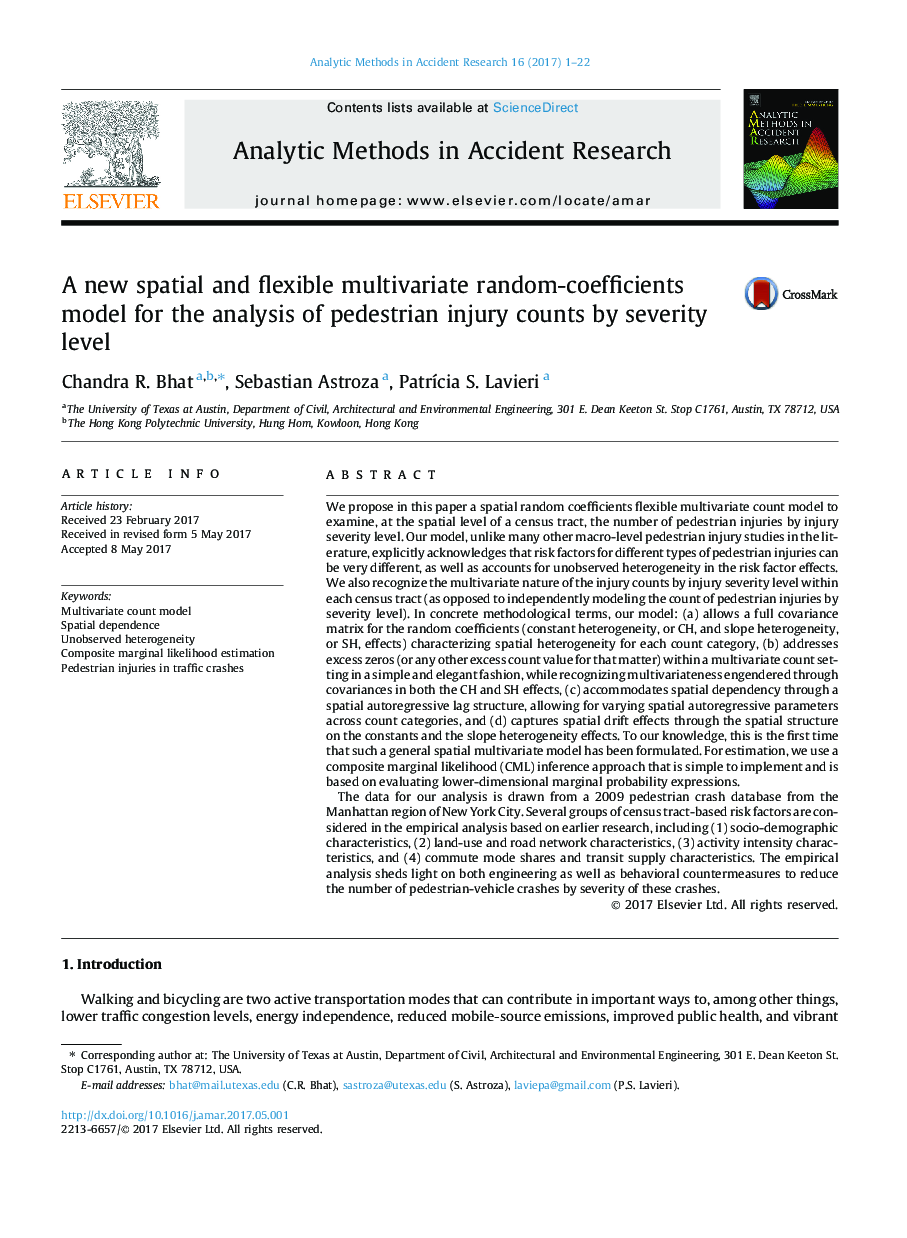| Article ID | Journal | Published Year | Pages | File Type |
|---|---|---|---|---|
| 5124654 | Analytic Methods in Accident Research | 2017 | 22 Pages |
We propose in this paper a spatial random coefficients flexible multivariate count model to examine, at the spatial level of a census tract, the number of pedestrian injuries by injury severity level. Our model, unlike many other macro-level pedestrian injury studies in the literature, explicitly acknowledges that risk factors for different types of pedestrian injuries can be very different, as well as accounts for unobserved heterogeneity in the risk factor effects. We also recognize the multivariate nature of the injury counts by injury severity level within each census tract (as opposed to independently modeling the count of pedestrian injuries by severity level). In concrete methodological terms, our model: (a) allows a full covariance matrix for the random coefficients (constant heterogeneity, or CH, and slope heterogeneity, or SH, effects) characterizing spatial heterogeneity for each count category, (b) addresses excess zeros (or any other excess count value for that matter) within a multivariate count setting in a simple and elegant fashion, while recognizing multivariateness engendered through covariances in both the CH and SH effects, (c) accommodates spatial dependency through a spatial autoregressive lag structure, allowing for varying spatial autoregressive parameters across count categories, and (d) captures spatial drift effects through the spatial structure on the constants and the slope heterogeneity effects. To our knowledge, this is the first time that such a general spatial multivariate model has been formulated. For estimation, we use a composite marginal likelihood (CML) inference approach that is simple to implement and is based on evaluating lower-dimensional marginal probability expressions.The data for our analysis is drawn from a 2009 pedestrian crash database from the Manhattan region of New York City. Several groups of census tract-based risk factors are considered in the empirical analysis based on earlier research, including (1) socio-demographic characteristics, (2) land-use and road network characteristics, (3) activity intensity characteristics, and (4) commute mode shares and transit supply characteristics. The empirical analysis sheds light on both engineering as well as behavioral countermeasures to reduce the number of pedestrian-vehicle crashes by severity of these crashes.
